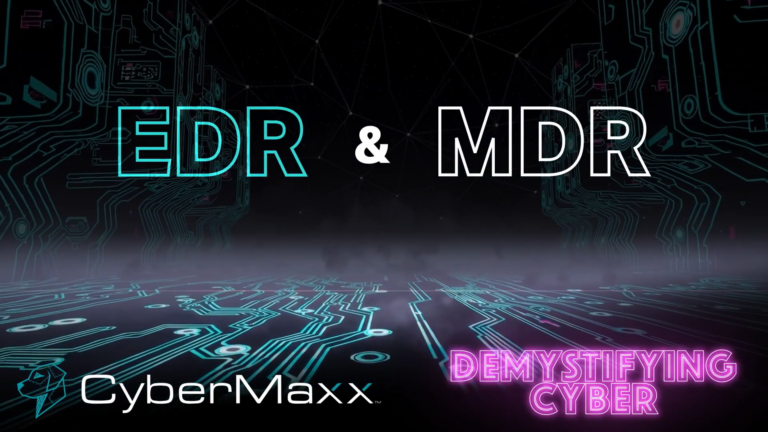Sometimes, cybersecurity can feel like nothing more than ticking off items in a checklist. But it’s important to remember its purpose: building real, lasting protection.
Let’s break down some of the biggest cybersecurity myths, misconceptions, and overlooked fundamentals that put businesses at risk.
Cybersecurity Myths: Why Flashy Tools Won’t Save You
Wouldn’t it be nice if the latest cybersecurity tools could solve your security problems? Unfortunately, this isn’t the case. Relying on technology alone isn’t enough. There’s no one tool, no panacea that solves our security question. Understanding cybersecurity myths and building strong fundamentals is still the best defense.
The Myth of “Set it and Forget it” Security
One of the most common cybersecurity myths is that you can simply “set it and forget it.” With all respect to Ron Popeil, that’s just not the case.A couple of decades ago, you might have been able to get away with implementing a security tool and hoping for the best while you turned your focus to other tasks. Unfortunately, those days are long gone.
Even the most effective tools can quickly become ineffective without continuous monitoring, tuning, updates, and training. Technology is moving faster than ever, and attackers are working around the clock to take advantage of businesses that make common security mistakes.
To stay on top of your security strategy, conduct a thorough risk assessment to define and review your objectives regularly. Continuously monitor network traffic, logs, and endpoints for suspicious activity, and periodically analyze collected data to identify potential threats and vulnerabilities. You can develop and implement appropriate responses according to your organization’s risk tolerance.
The False Sense of Security from AI and Automation
AI and automation improve cybersecurity, but they aren’t infallible. Attackers are constantly evolving and finding ways to bypass your automated defenses, and relying on them too heavily is becoming one of the most common security mistakes.
Human oversight is critical when it comes to making sure your AI-driven security tools work as intended. Most AI tools rely heavily on identifying and responding to patterns. That means they’re useful for finding anomalies that deviate from typical behavior. However, they aren’t as helpful in responding to threats, especially ones they haven’t encountered before.
Designing your systems for collaboration between trained professionals and AI is vital. Human intervention must remain possible when critical decisions arise.
The Most Overlooked Cybersecurity Mistakes: Common Gaps That Put Organizations at Risk
Even companies that take cybersecurity seriously can overlook critical areas. These simple mistakes create vulnerabilities that cybercriminals can quickly exploit and can cost a lot of money to fix.
Weak or Reused Passwords Are Still a Problem
Despite years of warnings, weak and/or reused passwords remain a top attack vector. These passwords are easy to guess, as they often contain personal information, common words, or simple patterns.
According to a 2024 report published by Forbes Advisor, 78% of people still use the same password across multiple accounts.
Unfortunately, it would be difficult to remember a unique complex password for every single account, which means people cut corners. Implementing multi-factor authentication (MFA) and using a password manager are easy yet practical security best practices that can help you reduce risk.
Ignoring Employee Training and Awareness
Even the best-trained employees can’t always be perfect, especially when overwhelmed or fatigued. That’s why phishing remains one of the most successful attack methods.
You can reduce the likelihood of employee errors through building a security-first culture within your organization. That includes implementing regular training and simulated phishing exercises to educate employees on cybersecurity best practices.
Poor Patch Management Leaves the Door Open
Software updates are annoying, and it can feel tempting to delay them. However, unpatched software and outdated systems are among the easiest ways for attackers to gain access.
Your organization should have a structured patching schedule to close these security gaps. You should remove software unsupported by its vendor, and assess your systems frequently for potential vulnerabilities.
Why Compliance Isn’t the Same as Security
Many organizations misunderstand the differences between compliance and security, and they focus on compliance as their primary security measure. While compliance is essential, it doesn’t guarantee your business’s security.
Compliance Is a Minimum Standard, Not a Full Security Strategy
HIPAA and PCI-DSS offer essential guidance on data security, but they lag behind the evolving threat landscape. Updates are infrequent, leaving gaps in coverage for newer risks. That can leave your organization vulnerable.
Attackers Don’t Care If You Passed an Audit
Meeting compliance standards helps protect your organization from legal penalties, reputational damage, and lawsuits. It can also build trust with stakeholders to provide a competitive advantage in your industry.
Unfortunately, none of this matters to attackers. Compliance doesn’t guarantee protection against ransomware, phishing, or zero-day attacks. To avoid these, you need to focus on security.
How to Fix These Issues: Practical Steps to Strengthen Your Security Posture
Fortunately, you don’t need to overhaul your entire security program to stay ahead of attackers. Instead, you can make small, strategic changes. Here’s where to start.
Focus on Security Fundamentals First
Implementing strong authentication through MFA and password policies, such as requiring employees to use a password manager, is the bare minimum. The biggest hurdle is convincing people to set them up.
In addition, regular employee training allows you to bust common cybersecurity misconceptions and teach your employees about security best practices that will protect your business.
Finally, you should implement regular software updates and patch management to prevent attackers from exploiting simple security loopholes.
Go Beyond Compliance with Continuous Threat Monitoring
Understanding the difference between compliance vs. security is essential. Annual audits are necessary for compliance, but they won’t do much to protect you from attackers. To improve your cybersecurity, you should implement real-time threat detection.
Managed Detection and Response (MDR) services from a professional provider like CyberMaxx can reduce your cybersecurity risk by providing around-the-clock protection. With 24/7 monitoring, you can proactively identify and mitigate threats before attackers exploit them.
Work with a Security Partner Who Prioritizes Transparency
Many cybersecurity providers operate as “black boxes.” They may get the job done, but they offer little insight into what’s happening behind the scenes.
CyberMaxx believes in proactively educating businesses with relevant, transparent information. Understanding what’s going on behind the scenes reveals the real threats your organization faces. With that insight, you can make more informed decisions.
Build a Strong Cybersecurity Foundation By Implementing Best Practices
Strong cybersecurity starts with a solid foundation. Organizations can establish genuine, long-lasting protection against evolving threats by educating themselves about cybersecurity misconceptions and addressing common mistakes before attackers exploit them.






